Table of Contents
Share this article
Learn from the brightest minds how to predictably and efficiently grow revenue.
Related Content
Improve your win rates by 117% by spotting these slippage red flags
easily identify the telltale signs of risk that an opportunity is going to slip. Equipped with this knowledge, sales teams can then be proactive to salvage these opportunities, close them faster and improve win rates.
How to Analyze your Sales Pipeline – Measuring Your Pipeline Health
The key to understanding how your pipeline is performing is knowing what state it is in. The gauge of that is pipeline health. In the first of our series, we looked at creating the foundations of your pipeline and the metrics that are needed to know what is happening within it. In this article, we…
What is Revenue Operations?
They say all roads lead to Rome. If you imagine Rome as revenue, then the role of revenue operations is to make sure that those roads are built in the most efficient way and that they are effectively signposted. Revenue operations, or “rev ops” in it’s shortened form, is the strategic alignment of sales, marketing,…

Salesforce Reports Best Practices (with Examples)
Table of Contents
5 Best Practices You Can Apply to Your Salesforce Reports
In sales, analytics are essential to inform decisions, generate new ideas, and unveil growth opportunities. According to the 2018 Global Data Management Benchmark Report, approximately 52% of firms contend that data and analytics will be a source of opportunity in the future. In this age of information overload, more companies are relying on data to offer actionable insights. The big question is; how can sales teams visualize their sales data to inform decisions and evaluate performance?
What Is a Salesforce Report?
Salesforce reports are defined as a visual representation of sales data. The information presented in a report can be filtered according to different durations and can offer real-time data. Sales reports are beneficial for sales teams. They offer an overview of KPIs and determine how your sales team is faring towards your objectives and revenue targets. Sales reports can be used to evaluate sales performance, make decisions, award incentives and bonuses, and identify an issue in the sales process.
What Are the Best Salesforce Reports?
There are many different kinds of Salesforce reports that your business can employ. Every business has unique tracking and reporting needs, but these five examples should provide a few of the best Salesforce reports for you to consider implementing in your organization.
1. Traditional Funnel Chart
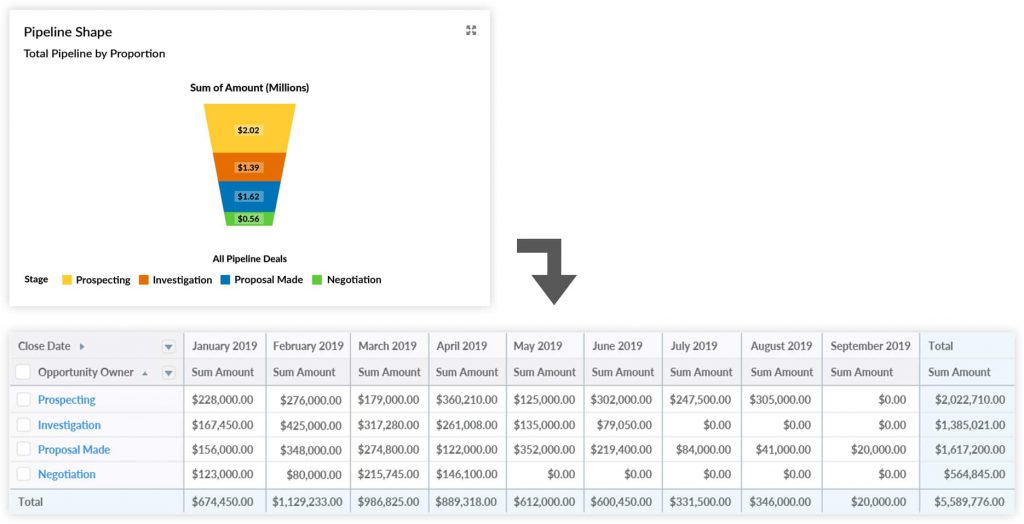
The funnel chart offers valuable data into how sales and marketing are working collaboratively. It merges the sales and marketing department because they use the same dashboard to make data-driven decisions.
With this report, you can identify whether marketing is generating leads and whether the leads are converting. If the leads are not converting, maybe the sales reps are delaying before they pursue leads or perhaps marketing is not qualifying the leads correctly.
2. Top 10 Pipeline Customers & Prospects
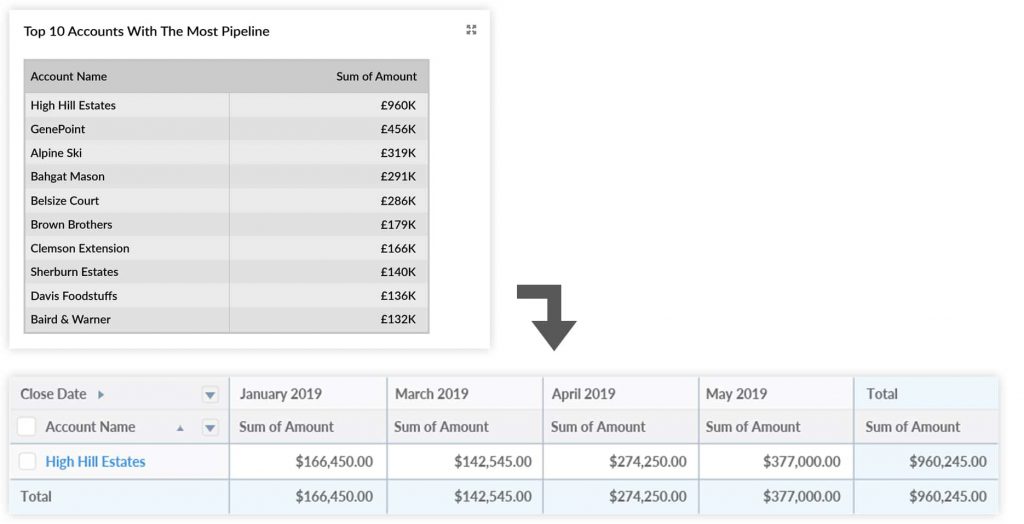
In most companies, salespeople can immediately name their prospects. However, what about the top 5? Or the top 10?
This Salesforce report chart shows the customers and prospects ranked by total pipeline. This information helps managers and salespeople prioritize their time and attention. It means salesperson effort, time and other resources are focused on areas where they are likely to have the most significant impact. Displaying the information in a report is an excellent way of focusing attention on the top Accounts. Limit the report to the top 5, 10, or 15. Then on the underlying report, list all Accounts with Open Opportunities.
3. Closed Won Opportunities by Month
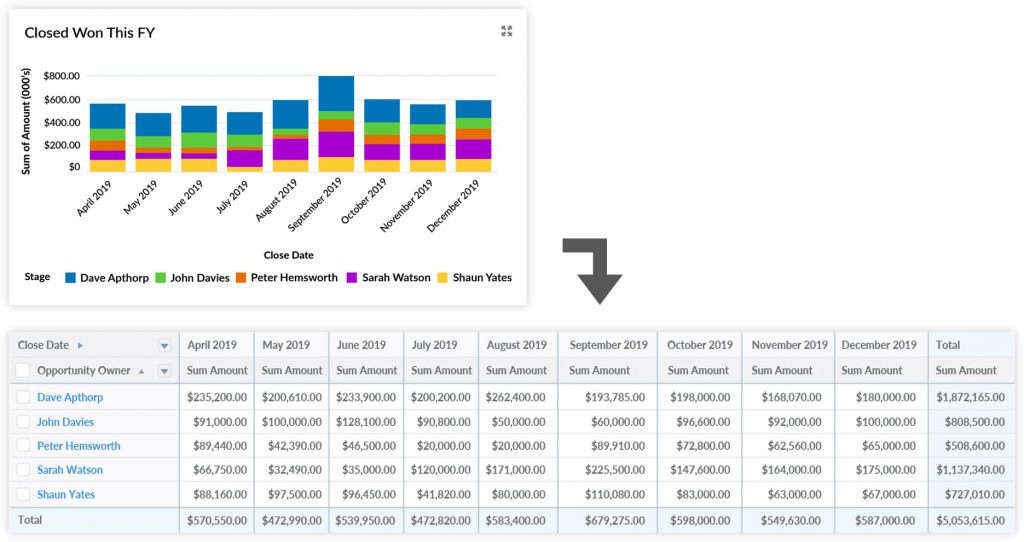
We all want to know the figure for sales revenue won in the year. That’s what the Closed Won Opportunities by Month report tells us. It shows how much sales revenue the company achieved during the financial year.
NOTE: You can summarize the information by each salesperson. If you have a larger sales organization, then group the report by team, country, or territory.
The report delivers essential insight into sales performance.
4. Open Opportunities by Created Date
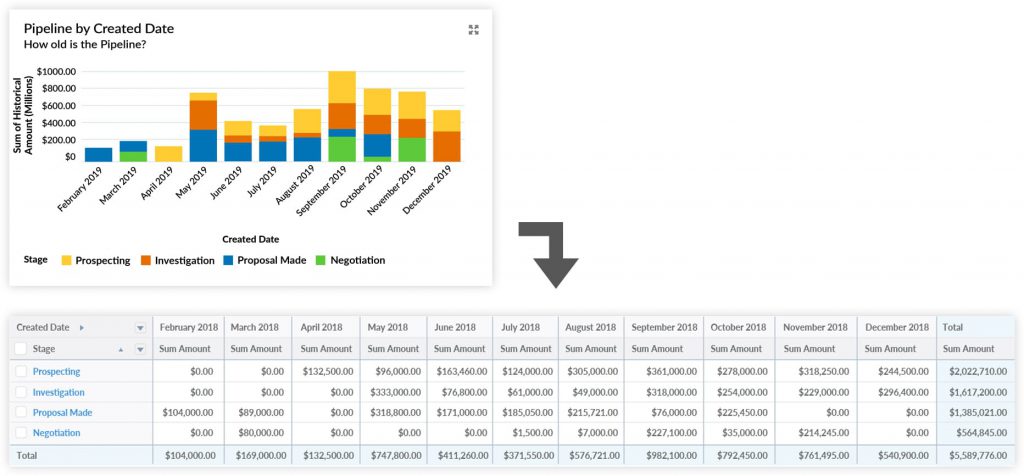
Here’s a simple but effective way to assess pipeline quality. It’s the Open Opportunities by Created Date.
This report shows the existing funnel, summarized by Created Month and current Stage. You may also want to create a similar report that displays the information by Created Month and Opportunity Owner.
The report tells us two things:
• How much pipeline was created each month. That’s important because all other things being equal, more pipeline means increased future revenue.
• The report is a pipeline-quality reality check.
5. Sales Performance vs. Target
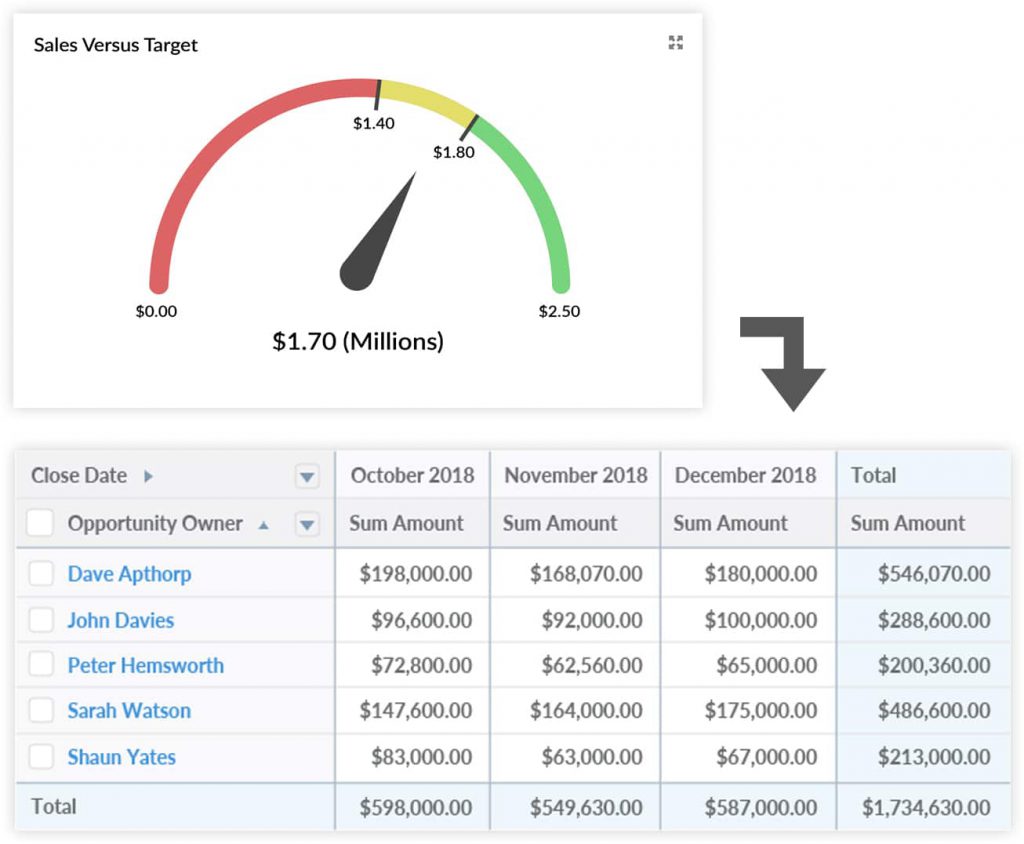
You might be wondering where’s the Target tab in Salesforce? Well, there isn’t one. That’s unfortunate because measuring sales performance against targets is a fundamental aspect of managing a sales team.
So how do you measure sales versus target or quota? There is only one way to do this in Salesforce:
· Use the Forecasts tab.
The Forecasts Tab is the standard Salesforce feature for target tracking. It includes the ability for managers to override their team members’ targets. Unfortunately, the Forecasts function is complex; salespeople and managers need significant training to use it effectively.
Need Help Creating Salesforce Reports?
Whether you are a Sales Manager or a Rep, reports can make your life easier by revealing opportunities for improvement and informing decision-making. You don’t have to wonder how your sales team is performing or spend countless hours going through documents and spreadsheets; you can get all your answers with one click.
While we are here…the Ebsta Engagement score has been blowing the minds of sales managers and leaders.
Imagine being able to see the real engagement of your reps and their pipeline as driven by actual communication data?
Ebsta Team connects all the communication data (emails, calendar invites and calls) your sales team produce to arrive at the Ebsta Engagement Score, find out more by requesting a demo here.
